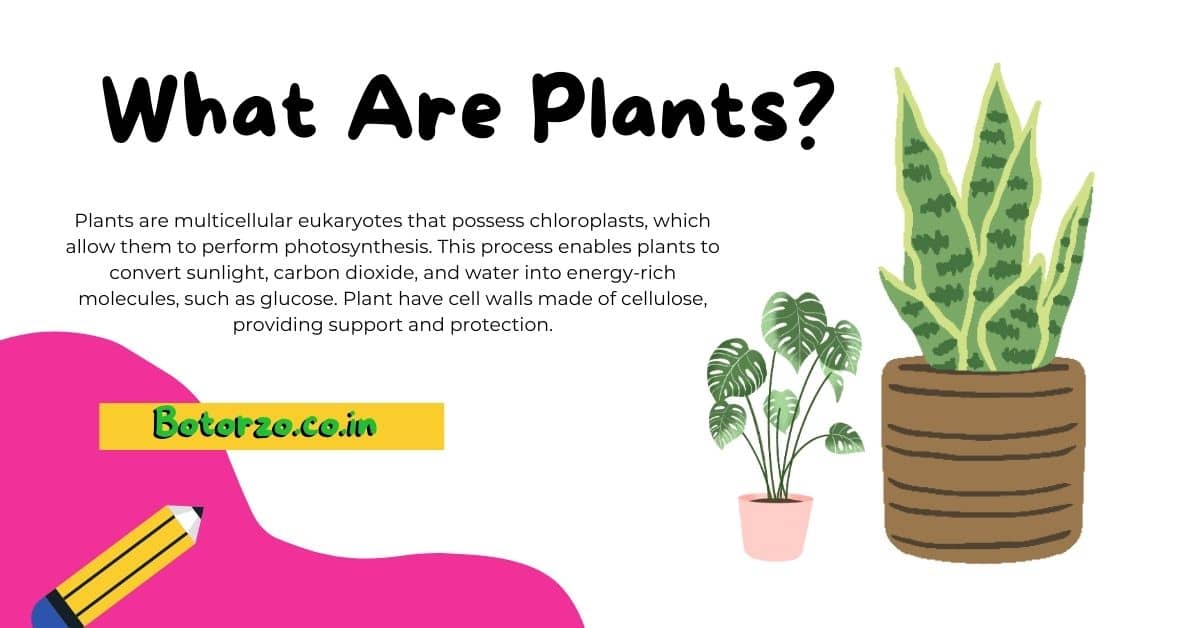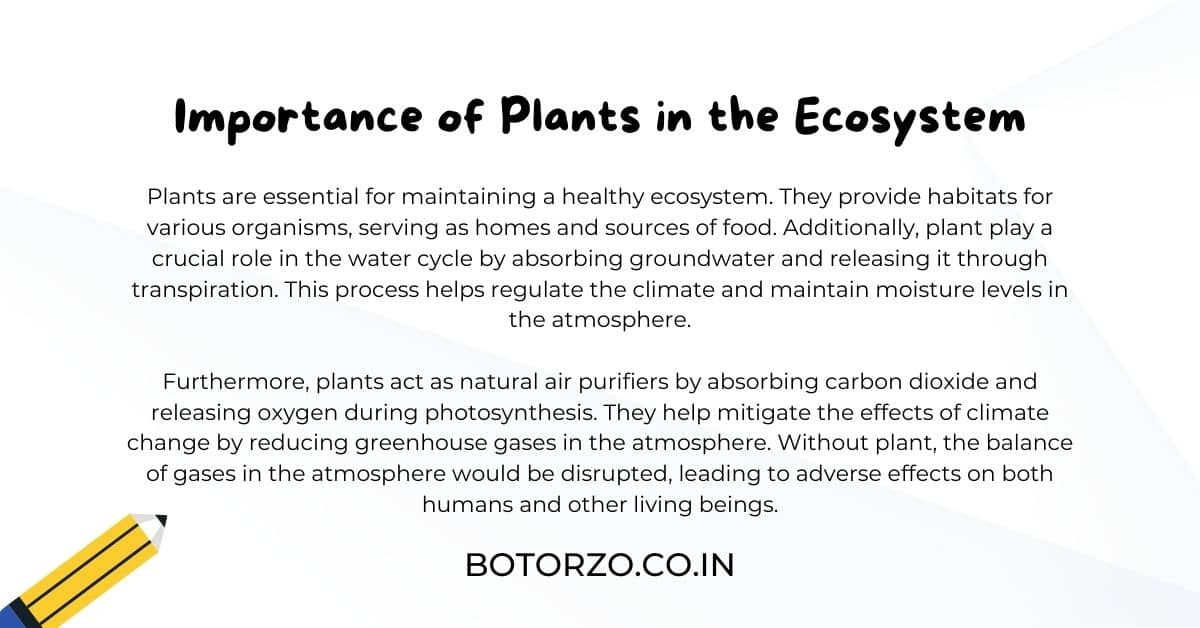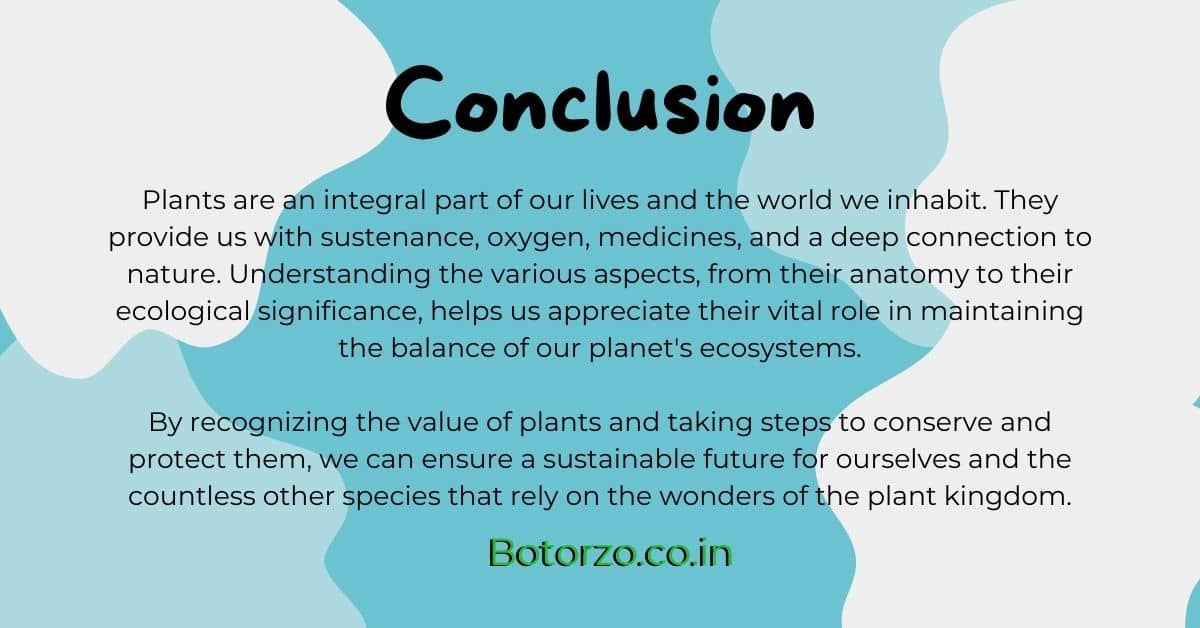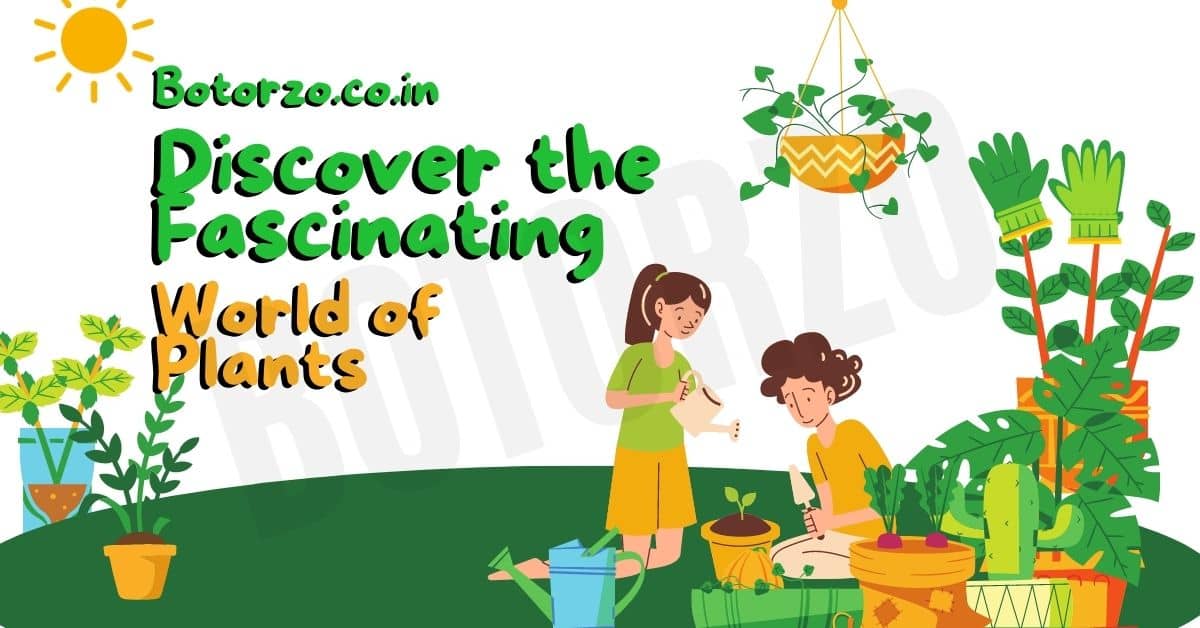Plants play a crucial role in our lives and the environment. They provide us with oxygen, food, shelter, and numerous other benefits. However, many of us may not fully understand the fascinating world of plants and the vital functions they perform. In this article, we will delve into the intricacies of plants, exploring their various components, growth processes, and their significance in our lives.
Introduction
Plants are living organisms belonging to the kingdom Plantae. They are incredibly diverse and exist in various shapes, sizes, and habitats. From towering trees in the rainforests to tiny mosses clinging to rocks, plants exhibit a remarkable range of adaptations that enable them to thrive in different environments.
What Are Plants?

Plants are multicellular eukaryotes that possess chloroplasts, which allow them to perform photosynthesis. This process enables plants to convert sunlight, carbon dioxide, and water into energy-rich molecules, such as glucose. Plant have cell walls made of cellulose, providing support and protection.
Plant Anatomy and Structure
Plants have distinct anatomical features that contribute to their growth and survival. The roots anchor the plant, absorb water and nutrients from the soil, and store food. The stem provides support, transports nutrients and water, and aids in the overall structure of the plant. Leaves are the primary site for photosynthesis and exchange gases through tiny openings called stomata.
Photosynthesis: The Energy Conversion Process
Photosynthesis is a vital process that occurs in plant cells, particularly in the chloroplasts. Through photosynthesis, plants capture sunlight energy and convert it into chemical energy stored in the form of carbohydrates. This process releases oxygen as a byproduct, which is essential for all living organisms.
Plant Growth and Development
Plants exhibit remarkable growth and development throughout their lifespan. Growth occurs through cell division and elongation, primarily at the tips of shoots and roots. The plant’s development involves the differentiation of cells into various specialized tissues, such as xylem and phloem, enabling the transport of water, nutrients, and sugars throughout the plant.
Reproduction in Plants
Plants have unique reproductive mechanisms that allow them to produce offspring. Some plants reproduce through seeds, while others use spores or vegetative propagation. Flowers play a significant role in sexual reproduction, attracting pollinators and facilitating the transfer of pollen between male and female plant parts.
Related Post: Sedimentation, Decantation, and Filtration
Sieving Method of Separation, Advantages and Disadvantages
Winnowing Method Of Separation
Threshing Method Of Separation
Handpicking – Methods Of Separation
Adaptations in Plants
Plant have evolved diverse adaptations to survive in different habitats. These adaptations can include modifications in leaf shape, root structure, or the ability to store water. Some plants have developed mechanisms to deter herbivores or attract beneficial organisms for pollination or seed dispersal.
Importance of Plants in the Ecosystem

Plants are essential for maintaining a healthy ecosystem. They provide habitats for various organisms, serving as homes and sources of food. Additionally, plant play a crucial role in the water cycle by absorbing groundwater and releasing it through transpiration. This process helps regulate the climate and maintain moisture levels in the atmosphere.
Furthermore, plants act as natural air purifiers by absorbing carbon dioxide and releasing oxygen during photosynthesis. They help mitigate the effects of climate change by reducing greenhouse gases in the atmosphere. Without plant, the balance of gases in the atmosphere would be disrupted, leading to adverse effects on both humans and other living beings.
Plant and Human Interaction
Plants have a significant impact on human life. They provide us with a wide range of resources, including food, medicine, shelter, and clothing. Many of the fruits, vegetables, and grains we consume daily come from plants. Additionally, plant are a valuable source of natural fibers used in the production of textiles and materials.
Moreover, plants contribute to our overall well-being. Being in nature and surrounded by greenery has a positive effect on mental health, reducing stress and improving mood. Gardening and cultivating plant also promote physical activity and a sense of connection with the natural world.
Medicinal Plants and their Uses
Plants have been used for medicinal purposes for centuries. Traditional systems of medicine, such as Ayurveda and Traditional Chinese Medicine, rely heavily on plant-based remedies. Many modern pharmaceuticals are derived from plant compounds or inspired by their chemical structures.
Plants like aloe vera, turmeric, and chamomile possess healing properties and are used to treat various ailments. From relieving minor skin irritations to combating chronic diseases, medicinal plants continue to play a significant role in healthcare.
Plants as a Source of Food
Plants are the primary source of food for humans and other animals. Fruits, vegetables, grains, legumes, and nuts are all derived from plant and form the foundation of a healthy diet. They provide essential nutrients, vitamins, and minerals necessary for growth, development, and overall well-being.
The cultivation of crops and the practice of agriculture have allowed us to sustain larger populations and build civilizations. It is through the domestication and selective breeding of plants that we have created an abundance of diverse food crops that cater to our nutritional needs.
Landscaping and Ornamental Plants
Plants also serve aesthetic purposes in landscaping and horticulture. Ornamental plant are cultivated for their beauty and decorative value. From vibrant flowers to lush green lawns, plants enhance the visual appeal of outdoor spaces and bring tranquility to our surroundings.
Landscaping not only improves the aesthetics of residential and public areas but also provides shade, reduces soil erosion, and contributes to a healthier environment. Parks, gardens, and urban green spaces are essential for fostering a sense of community and promoting biodiversity within cities.
Indoor Plants and their Benefits
Indoor plants have gained popularity for their aesthetic appeal and the numerous benefits they offer. Having plants indoors improves air quality by filtering out pollutants and releasing oxygen. They can help reduce stress, increase productivity, and create a more pleasant and calming atmosphere in indoor spaces.
Certain indoor plants, such as snake and spider plants, are known for their ability to purify the air by absorbing harmful toxins. They are particularly useful in spaces with poor ventilation or high levels of indoor pollutants, such as offices and homes.
Threats to Plant Life
Plants face various threats that impact their survival and biodiversity. Habitat destruction, deforestation, climate change, invasive species, pollution, and overexploitation are significant factors contributing to the decline of plant populations worldwide. Loss of plant species not only affects ecosystems but also disrupts the delicate balance of our planet.
Conservation efforts, reforestation, sustainable agricultural practices, and raising awareness about the importance of plants are crucial for protecting plant life and maintaining a healthy environment for future generations.
Conclusion

Plants are an integral part of our lives and the world we inhabit. They provide us with sustenance, oxygen, medicines, and a deep connection to nature. Understanding the various aspects, from their anatomy to their ecological significance, helps us appreciate their vital role in maintaining the balance of our planet’s ecosystems.
By recognizing the value of plants and taking steps to conserve and protect them, we can ensure a sustainable future for ourselves and the countless other species that rely on the wonders of the plant kingdom.
FAQs (Frequently Asked Questions)
Are all plants capable of photosynthesis?
No, not all plants can photosynthesize. Some plants, like mistletoe, are parasitic and obtain nutrients from host plants instead.
How do plants reproduce without seeds?
Plants reproduce without seeds through spores (e.g., ferns) or vegetative propagation (e.g., succulents, houseplants).
Can indoor plants improve air quality?
Yes, indoor plants filter air by absorbing carbon dioxide and releasing oxygen. Some plants also remove pollutants like formaldehyde.
Suitable plants for arid landscaping?
Choose drought-tolerant plants like succulents (agave, aloe vera) and native species adapted to arid conditions.
How does climate change affect plants?
Climate change affects plant growth, reproduction, and ecosystems. Rising temperatures and altered rainfall patterns disrupt plant life cycles.
Read Engineering Related Content From EgineeringAdda.in

